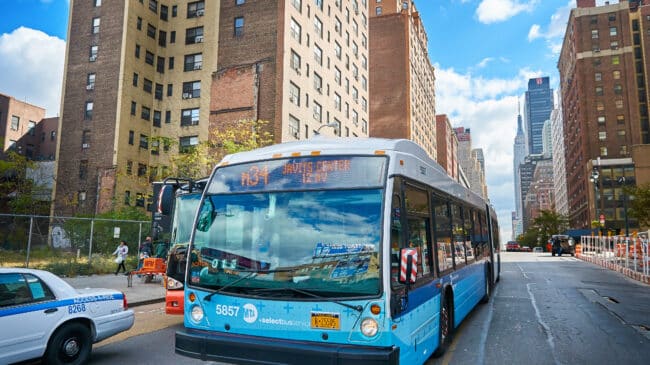Introduction
This report is the first of three from a research initiative addressing how urban transportation can reduce climate change. This report provides a baseline on how transportation impacts greenhouse gas (GHG) emissions.
The second report, “Public Transit and Climate Change,” focuses specifically on the extent to which urban public transportation can help reduce GHG emissions.
The final report in the series, “The Path Forward: Urban Mobility in a Climate-Sensitive Post-COVID World,” explores the challenges and opportunities going forward as demographic, economic, technological, cultural, and political conditions evolve to influence urban transportation. It lays out the role transportation can play in meeting mobility needs and reducing GHG emissions.
Thus, this report lays out foundational information that helps guide the observations and findings in the referenced subsequent reports. It also informs the broader understanding of the role of transportation in addressing climate challenges.
Policymakers are increasingly concerned about climate change. Increased scientific evidence, accumulating observations of weather and climate changes over time, changes in political leadership, and ever-increasing media attention to weather and climate phenomenon have engaged the public. Pew Research reports that the share of Americans believing climate change is a major threat increased from 44% in 2009 to 54% in 2022.
As the single largest domestic greenhouse gas emissions-producing sector, transportation is inevitably a focus of climate change mitigation initiatives. This attention is further enabled by the prospect of a path forward via focusing on a strategy based on the electrification of vehicles, a transition to sustainable electricity production, and reliance on alternatives to personal vehicles for travel.
As climate impact moves up the ranks of evaluation criteria for virtually every transportation investment and policy decision, it is important to base these discussions on transportation’s specific contribution to GHG emissions and the respective roles of person travel and freight across urban and rural geographies.
It is also important to realize that transportation trends are evolving at a rate far greater than in the past several decades as changes in technology, demographics, and public priorities influence the amount, type and means of travel.
Yet, today’s transportation decisions and their impact on tomorrow’s GHG emissions may not be well grounded in a rich understanding of travel behavior and transportation markets. Much uncertainty remains regarding the phenomena of climate change, technology’s effectiveness in mitigation, behavioral reactions to technology and policy initiatives, and unintended side effects. Both the magnitude of climate-protecting actions and the timeframe for their impacts to play out are critically relevant issues as transportation planners and policymakers weigh various policies and investment decisions going forward.
Most data in this report references pre-COVID-19 pandemic conditions as a baseline for the discussion and analysis. These data are available and are most representative of the respective historic roles of passenger and freight transportation modes. Many analysts anticipate that there may be changes in the magnitude and shares of both passenger and freight mode use in a post-COVID-19 era and that trends such as differential rates of electrification of vehicles are likely to alter the relative GHG intensiveness of transportation market segments going forward.
Read the full report here:
Download this Resource
Transportation and Climate Change: Travel Trends And GHG Emissions
By Steven E. Polzin, Ph.D
Thank you for downloading!
